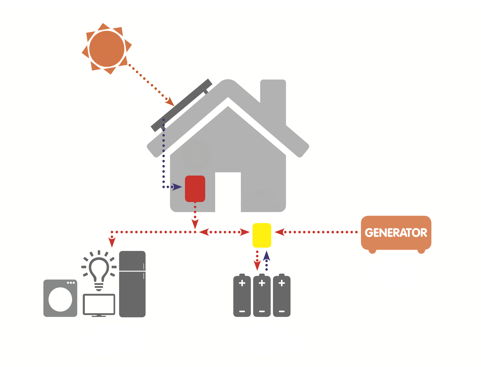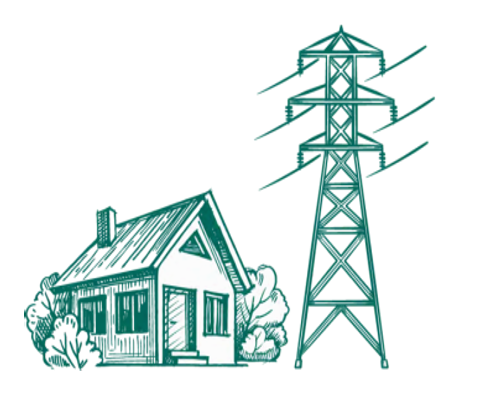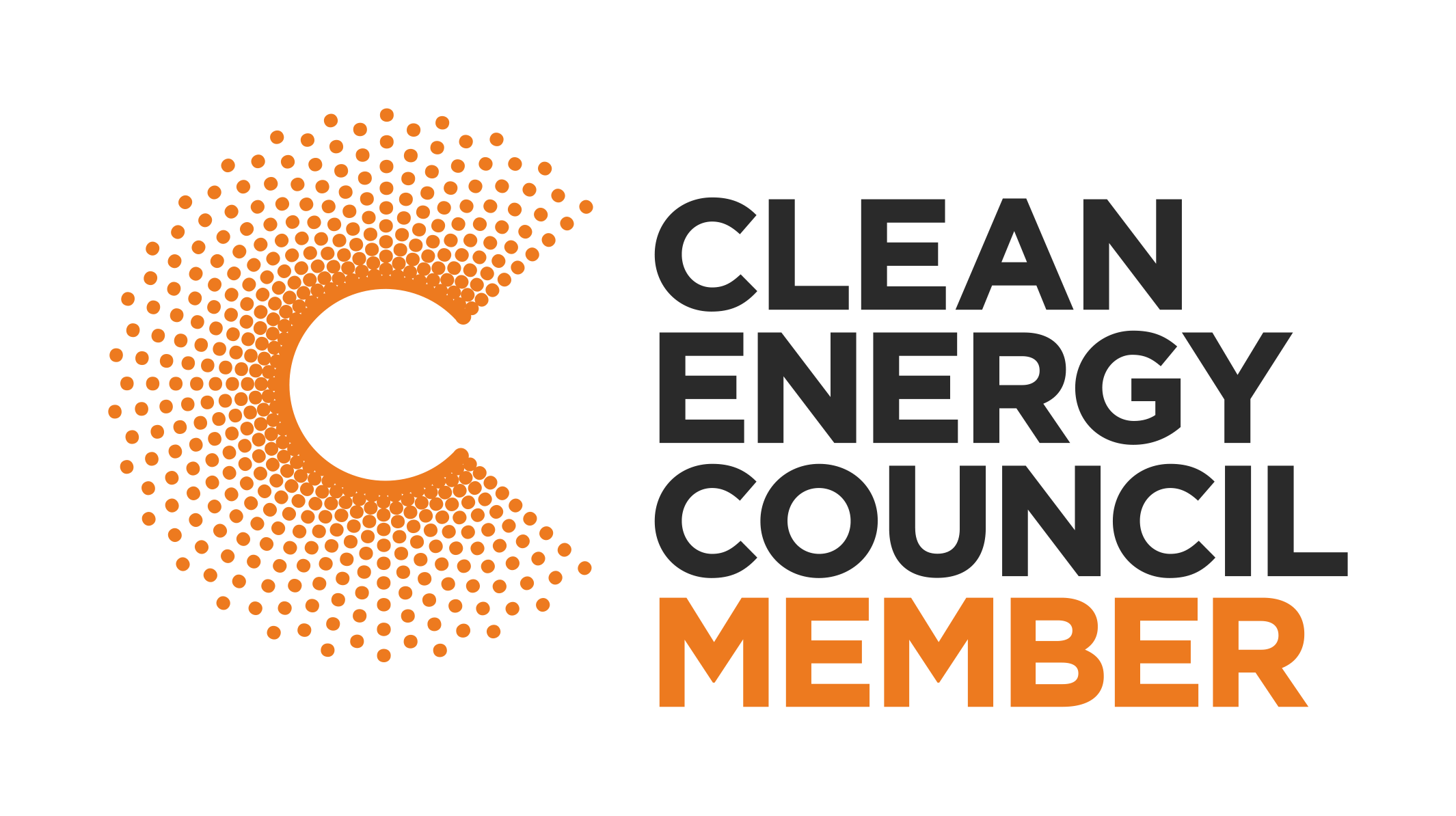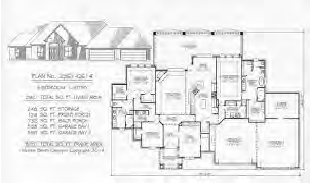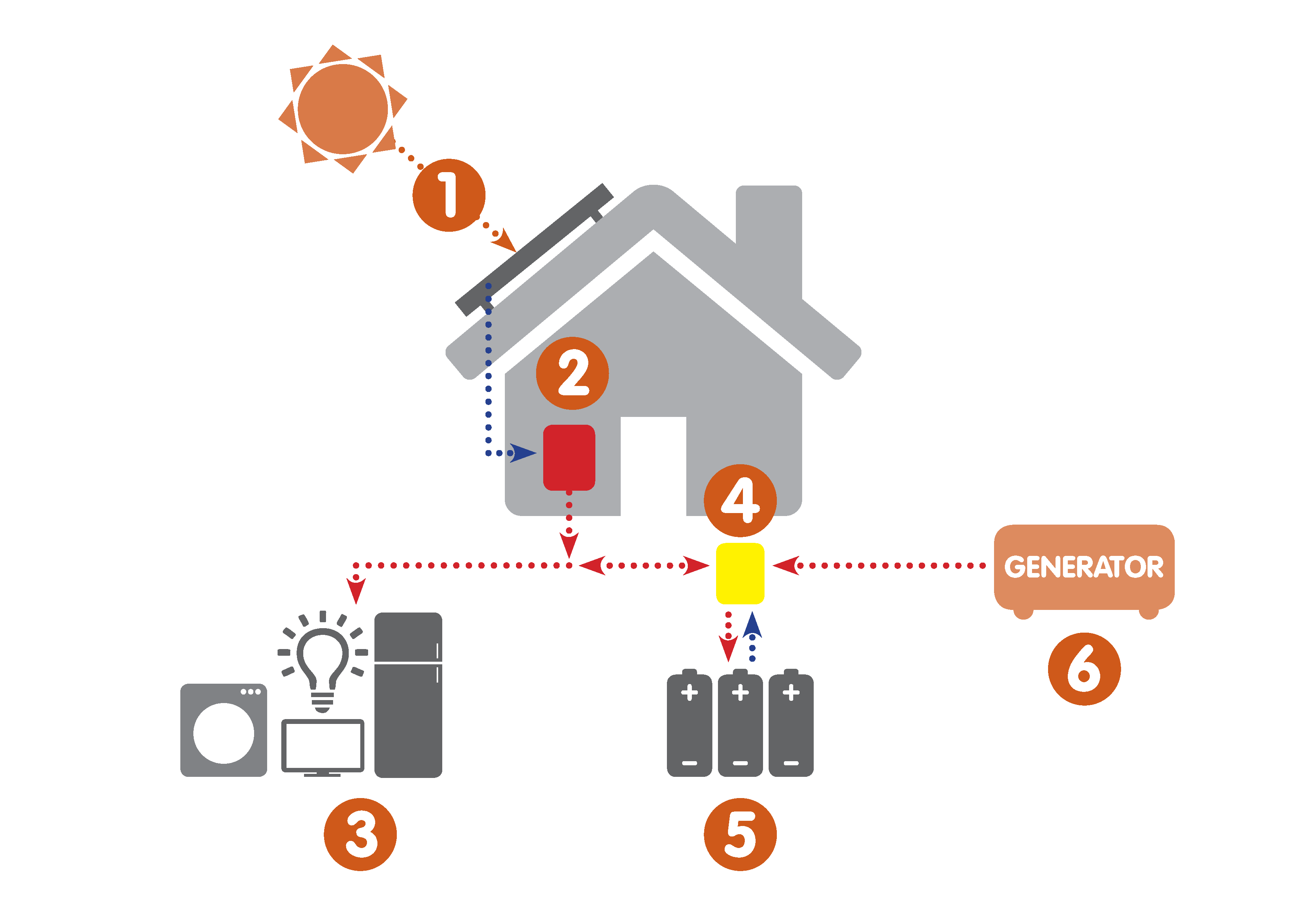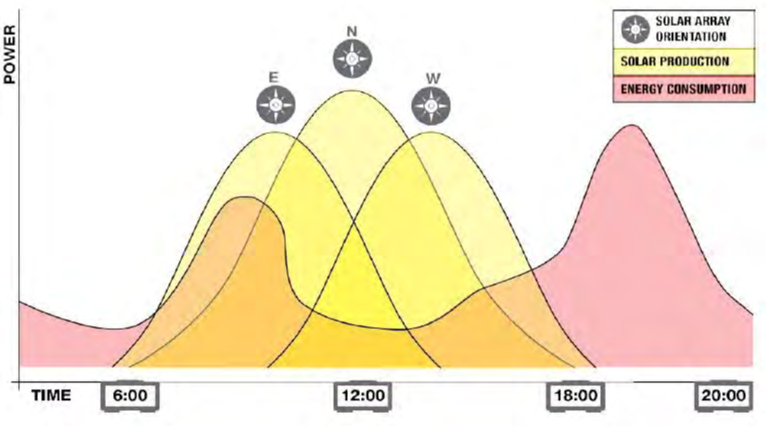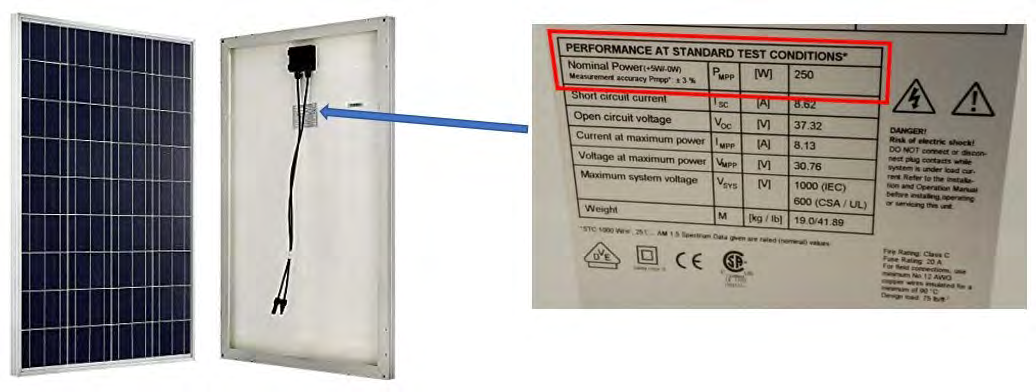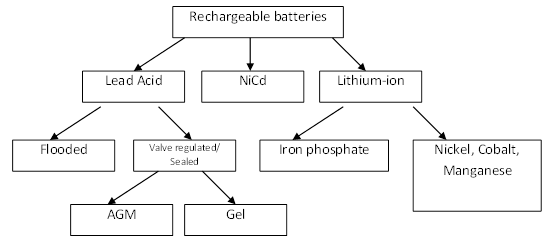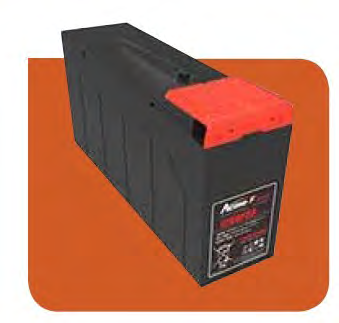SHOULD I GO OFF-GRID OR GET A GRID CONNECTION?
With rising electricity prices and large upfront connection costs, choosing to go Off-Grid for your electricity is
increasingly more attractive. When choosing between an Off-Grid system or paying to connect your property to the
grid, looking at your systems life cycle will help to understand the total cost of each option over the long term, not just
the initial upfront cost.
The biggest mistake people make is purchasing a system that is too small to power their lifestyle. Going Off-Grid with
the dream of never paying a power bill again can be extremely attractive. But if you can’t afford to do it properly,
you’ll end up wishing you got connected to the main electricity grid.
Before you start your journey towards Off-Grid living, there are a few things to consider:
- Firstly, find out what the cost would be to get a grid connection. As well as the initial connection cost, there is the
projected cost of total electricity over the next 10-15 years plus an expected 5% electricity price increase per year - Get an energy assessment done to find out what kind of Off-Grid system is best suited to your circumstances,
expectations and budget. Get in touch with us and we’ll give you a free energy assessment, design a customised Off-
Grid system and guide you through the process with our best recommendations - Find a good balance between value for money and quality. Buying the cheapest system on the market is a calculated risk when it comes to solar systems that are connected to the conventional grid. If your inverter fails, your solar system may not work but at least you will still have an electricity supply in your home.
WHEN YOU ARE OFF-GRID, POOR QUALITY COMPONENT FAILURES CAN LEAVE YOU WITHOUT POWER. IT IS NOT WORTH THE RISK!
- If you want the best value for money, use common business sense. The saying “You get what you pay for” is generally true. Try and future proof your system by being realistic with your projected energy use and balancing this
against your budget.
THE MANY REASONS FOR GOING OFF-GRID
• You are building a new shed or workshop on an existing rural property
• You are looking to build a new home in an area with no grid connection.
• You are looking for the perfect green-field solution for your holiday retreat/weekender without the ongoing commitment and cost of grid connection.
• You have a small remote shed or shack remotely that you need to power
• You are looking for a complete sustainable living option
• The cost of connecting to the grid is higher than installing an independent Off-Grid system.
WHAT YOU CAN EXPECT WITH OFF-GRID LIVING
• No ongoing power bills
• No connection fees
• Protection from rising power prices
• Independent and sustainable electricity
• The equipment you pay for, you own
• A green and renewable source of electricity
WHAT IS THE DIFFERENCE BETWEEN LIVING OFF THE GRID AND LIVING ON THE GRID?
If your system is designed correctly, the difference is very little, as even in bad weather, such as prolonged rainy days,
we can seamlessly automate a generator with an auto start function to ensure your home always has the power you
need.
A correctly designed Off-Grid system with 1.5-3 days autonomy, oversized PV Arrays and a back-up generator
redundancy, will provide similar or higher grid stability and reliability than the Electrical Distribution Network (the Grid) and its operator can offer
WHAT SORT OF INCENTIVES OR REBATES ARE AVAILABLE FOR OFF-GRID SOLAR POWER?
All solar panel installations in Australia are subsidised by the Federal Government’s STCs incentive (Small scale Technology Certificates) which offset the cost for your system. There are two ways this incentive can affect the cost of your Off-Grid system.
1. Under the Small-scale Renewable Energy Scheme, small-scale technology certificates are calculated based on system location, installation date, and the potential amount of electricity generated over the course of its lifetime – which is referred to as the deeming period.
As the Small-scale Renewable Energy Scheme will end in 2030, the standard 15 year deeming period for a solar PV system has already started to reduce on 1st January 2017 to 14 years and each following year, until the closure of the scheme in 2030.
This will reduce the number of small-scale technology certificates that can be created for an eligible system. The reduced amount of STCs from 1st January represents a 6% drop. This means that solar panels may become more expensive every year unless prices for solar panels are reduced
as well.
2. The value of each STC is based on supply and demand. Consequently, the STC market is from time to time subject to volatility, which in turn effects the value of each STC.
NOTE: Solar panels, inverters and chargers must be on the Clean Energy Council’s (CEC’s) approved list of Off-
Grid solar power system components and the installations must be done by a CEC accredited Off-Grid installer.
WHAT TO CONSIDER WHEN MAKING THE MOVE TO OFF-GRID POWER
When considering an Off-Grid system to power your new dwelling, you need to assess your daily power consumption. Going Off-Grid will also require you, and your family, to become a lot more conscious of your energy usage, as you don’t have the support of the grid.
When calculating how much power you may use in a new property you must consider 5 important things and how they relate to your systems’ requirements – possibly saving you thousands of dollars in system costs. Energy intensive appliances are those that heat or cool a space, be it air, water or an element. The major considerations are:
1. Gas or Solar Hot water – An average electric hot water system for a 3 or 4-person house may easily consume 4 kWh per day alone. Gas or Solar Hot water is a great option to simply and drastically reduce you power consumption, in-return saving you big money. Important to note that in bad weather you may need to boost your solar hot water system and if it has an electric boost you’ll end up using a lot more power at a time when the generated power from your solar panels is drastically reduced.
2. Gas Cooking – Managing electric cook tops and ovens are another big requirement for your Off-Grid system. Although running ovens and elements from your Off-Grid system is definitely achievable you may find going with gas will save you a lot of money.
3. Wood Fire heating – Electric Bar heaters are massive consumers and when run for long periods, don’t fit in well with living Off-Grid. Wood Fire heating is an option taken up by many of our customers. A wood Fire stove is a great way to heat up your living spaces.
4. Efficient appliances – If you are buying a new property, you can take the opportunity to ensure you get the most efficient appliances, thereby reducing your Off-Grid system’s requirements. Energy star ratings are now present on all appliances, along with a yearly kWh usage. This can be used to select the most efficient appliances for your budget. LED lighting is a very efficient option and gives off good light. As numerous lights are usually on for at least a few hours a day, a more efficient light can add up to big savings.
5. Change your routines – It’s simple. When the sun is out, use your biggest energy consuming appliances. We call it “Blue Sky Rule”. Do your washing, vacuuming and all other household routines during the day, this way the electricity is in effect supplied directly from your panels and not discharging from your battery storage. For smaller systems you may want to load-share, which means you stagger the use of your high draw appliances such as toasters, microwaves and kettles etc. This will reduce the requirement for a large Off-Grid inverter which will save you even more money on the system cost. Use common sense and follow the “Blue Sky Rule”.
TALK TO AN OFF-GRID SPECIALIST TO GET GOOD RECOMMENDATIONS AND GUIDELINES
DO YOUR HOMEWORK
 It’s difficult to understand all the ins and outs of an Off-Grid solar system and that’s why you get an expert to
It’s difficult to understand all the ins and outs of an Off-Grid solar system and that’s why you get an expert to
help you design a system for you. However, it can be a mistake to leave everything to the expert. Do some due
diligence first. Find out what your expectations are and what it’ll mean for you living Off the Grid. Do your homework
before you get in touch with an expert, as they are going to ask you all sorts of questions and you want to get
it right from the start.
Off-Grid living by itself is not technically illegal. Producing your own power is Off-Grid living and perfectly legal. When you start to investigate Off-Grid power you need initially to find out a few things before you contact an Off-Grid system specialist. It will save both you and the system designer valuable time. The more information you have the easier you can make an informative decision.
1 Is grid connection a viable option?
The vast majority of people that go Off-Grid are doing so because they are faced with the inhibitive cost to connect grid power to their property. Firstly, you’ll need to find out the cost for getting grid connection to your dwelling. To be able to get a true cost comparison between grid connected power and an Off-Grid system, you also need to calculate and factor in the expected total electricity cost from the grid over the next 10-15 years. The upfront cost of installing an Off-Grid system is an investment you make to own your own electricity production, end of electricity bills, shrinking your environmental footprint, while having energy independence and not being exposed to the sort of price shocks and reliability issues which are out of your control when you are connected to the grid.
2 Current Grid connection – How to go Off the Grid
If you currently are connected to the Grid but want to go Off the Grid, you’ll need to find out if its viable and makes financial sense.
* Check with your local Council what the rules are i.e an Off-Grid system in the suburbs may cause complaints from neighbours if your back-up generator starts up at 2 am in the morning. A generator must be housed somewhere safe with appropriate ventilation and not cause a disturbance (e.g. noise and smell).
* Roof space limitations: The size of your roof (unshaded) is a huge determining factor in whether or not a house will be able to go off the grid. Many suburban houses simply do not have the roof space to fit enough solar panels to go completely Off-Grid.
* Do the figures: Compare your expected total cost for grid electricity over the next 15-20 years with the cost for your Off-Grid system.
Even if your pay-back period ends up being 15-20 years, there may be other reasons for going Off the Grid i.e.
* You are suffering frequent electricity blackouts,
* You want independent living,
* Your desire to get away from the consumption economy,
* A desire to go green,
* Lifestyle changes etc.
If you find out your plans to go Off-Grid are not financially viable, a happy compromise might be hybrid solar which has most of the benefits of being Off-Grid at a much lower cost.
3 Set a budget for your Off-Grid system
If you’re planning to build a new home, move into an existing one or purchasing a removable house to set up on your block, you need to give as much priority to your electricity source as you do when drawing up your house plans. Don’t leave it to the end. Get a quote for an Off-Grid system specifically designed for your needs early on and include it in your budget for the house. If not, you may end up with a smaller system than you need for your lifestyle. Remember, most Off-Grid systems can be upgraded over time.
4 Consult with an Off-Grid specialist at early stage
Speak to an Off-Grid specialist to get an accurate forecast on how much energy as kWh/day you need to power your lifestyle.
To get a good understanding of your specific needs and circumstances we ask a lot of questions about your house plans, how many people living there permanently, appliances, household routines, time of use, for how long etc.
Anything that is plugged in and can be turned on uses electricity. Your home gets broken down into bits and pieces to calculate how much energy you’ll need to live Off-Grid. Based on this energy assessment we can then size a system
specifically for your location, that will work perfectly for you – both now and into the future.
It’s important to get your estimated kWh usage per day so that your Off-Grid system can meet your needs and expectations. Make sure you and your family discuss what kind of appliances you are having in your Off-Grid home,
your household routines and the lifestyle you want to have e.g. happy to reduce the number of appliances simultaneously in use, live like being connected to the grid, future proof upgradeable system.
If you get your electricity usage right, you can strike the perfect balance between reliable energy and value for money.
5 Getting different quotes based on different electricity usages
If you want to compare a few Off-Grid system quotes, please have in mind they need to be based on the same electricity usage prediction. You can’t compare quotes based on different energy usage. Always ask for an estimated system performance and what electricity usage (kWh) per day the system is designed for.
6 Cutting corners on quality
A simple point that needs to be addressed. Buying a cheaper system doesn’t necessarily means you get the “best deal”.
In most buying processes there are three factors to consider;
1. The Quality of the product (components involved, installation etc.)
2. The Price
3. The After Sale/Technical Support/Warranty (Won’t leave you in the dark…).
Everyone wants to have top quality and the best after sale support at the lowest price. Unfortunately, that combination does not exist. For any reputable company that wants to stay long-term in this industry offering high-quality products and a good after sale support, can’t at the same time offer the lowest price. Common law of business balance prohibits offering a lot and getting paid little. Buying the cheapest system is a calculated risk you take. When poor quality components fail it’ll leave you without power and with poor or no technical support.
Your Off-Grid company should:
* use recognised good quality products
* use only CEC accredited Off-Grid installers
* customise an Off-Grid system specifically for your circumstances.
* give you ongoing support and never leave you in the dark.
DON’T GET CAUGHT WITH A LEMON!
7 Get a copy of your house plans
This makes it easier for the system designer to verify available roof space, roof orientation, roof pitch, a suitable dedicated area for inverters and the battery bank.
8 When do you need the system installed?
The time it takes from deposit to installation will vary depending on the Installer. Lead times between Installers can range from as little as three weeks up to four months. Typically, the shortest lead times are with local installers, while the longer lead times are with the larger, multi-state installers. Off Grid Australia works closely with a network of local CEC accredited installers all over Australia and our typical installation lead time is between 4 to 8 weeks. Make sure you let the system designer know when you need your system installed so they can advise you on the lead time in your specific area. A typical installation will take from 1 to 3 days depending on size and complexity of the system.
HOW DOES AN OFF-GRID SOLAR SYSTEM WORK?
During daytime, electricity is generated by the solar panels (1). The solar PV inverter (2) converts the DC power to AC power and either directly powers your electrical loads (3) or/and charges batteries (5) via an Off-Grid inverter/ battery charger (4).
During the evening or on cloudy days when the sun isn’t shining you use the power stored in the batteries “Battery Bank” (5). When the sun comes up the next day, the cycle begins again.
The third available energy source is a back-up generator (6) which can be integrated into the system.
AC and DC coupled Off-Grid systems
It seems like a small amount of confusion exists regarding photovoltaic systems with battery energy storage. What’s the confusion? DC and AC-coupled systems are many times referred to as the same system which is not correct.
1. AC coupled system
A design with a two-inverter configuration allows you to live a “normal” life during the daytime as if you’re connected to the grid. The solar panel inverter and its solar regulator converts the DC power from the solar panels into AC power which is supplied firstly into the current load in the house and secondly to re-charge the battery bank through the Off-Grid/Battery Inverter. During the daytime the Off-Grid/Battery inverter can also supplement more energy from the battery bank if required (e.g. unusual high load or overcast weather) into the household. The maximum power output (kW) from the system and the two inverters is big during the daytime which enables you to use many appliances simultaneously and live like you are connected to the gird.
2. DC coupled system
In a DC system, the energy comes from the solar panels via the solar regulator to the battery bank and then to the inverter in DC power without energy conversion. The inverter only converts the DC energy to AC energy so it can be used by your home appliances. A typical DC coupled system uses a separate solar regulator and one inverter. The maximum power (kW) output from this system is limited to this single inverter’s maximum capacity output i.e. 4000W (4kW) continuous with a 5kW inverter
In summary, harvested solar energy has two distinct flow paths in DC and AC-coupled systems. In AC-coupled systems, harvested solar energy first flows to AC loads in the house via the solar panel inverter and then to a battery bank via an Off-Grid/Battery inverter. In DC-coupled systems, the harvested solar energy first flows to a battery bank via a solar charge controller and then to AC loads in the house via a battery-based inverter. Further, DC-coupled systems, as the name implies are connected on the DC electrical system whereas AC-coupled systems are connected on the AC electrical system.
HERE’S HOW TO UNDERSTAND YOUR OFF-GRID SYSTEM
We fully appreciate it’s difficult to understand all the ins and outs of designing an Off-Grid solar system and that’s why you get an expert to do it for you. However, we always recommend you have a good understanding of the analysis behind the design of your specific Off-Grid system.
How to analyse your energy usage
Anything that is plugged in and can be turned on uses electricity. Your home energy usage needs to be broken down into bite size pieces to calculate how much energy you need to go Off-Grid. Find out what, where, when and how you use energy in your home i.e. what are your daytime household routines – washing machine, vacuum cleaning, dishwasher, cooking etc. What are your night time activities? Do you watch TV? What lights do you use and leave on? Do you boil the kettle for an evening cup of tea?
The amount of time you run an appliance is just as critical as the power that it draws.
Energy that we consume (Wh or kWh)
The energy we consume is measured in watt-hours (Wh), or kilowatt-hours (kWh). 1000Wh equals 1kWh. To calculate energy consumption, you simply multiply the appliance’s wattage (W) by the number of hours you use it to find the number of watt-hours. You can find the wattage normally on a sticker somewhere on your appliance.
POWER (W) x TIME(h) = ENERGY (Wh, kWh)
EXAMPLE 1
A 500W washing machine needs 500 watts of power to make it work and uses 500Wh of energy in an hour (0.5kWh).
If you run the machine 1½ hour it uses 500W x 1.5 = 750Wh (0.75kWh).
EXAMPLE 2
An electric Kettle rated at 1800W uses about 90Wh over 3 minutes (1800/60min x 3min). That’s only 0.09kWh BUT it requires the system to deliver the required 1800W (1.8kW) instantly. This is where the inverter’s maximum output capacity becomes important.
HOW TO ANALYSE THE ENERGY PRODUCTION OF YOUR OFF-GRID SYSTEM
The power rating of your solar PV system
The solar PV (photovoltaic) array is where your electricity is generated. It’s always better to have more power than you need, especially when the sun is shining down freely upon us. Make the most of the FREE sun and get a solar PV system that will allow you to use air- conditioning on hot summer days and leave you with enough power to charge your batteries in winter months.
There are many things to consider when selecting a solar PV system. Common questions that come up are:
• How many panels do I need?
- What is the wattage of the panels?
- What is the array size?
- What is the difference?
The power rating of a solar system is measured in kilowatts, or kW. It is a measure of how big your solar generation system is, not how much it will produce. This is similar to a car engine, where the size of the engine gives you an indication of how powerful it is, but doesn’t tell you how much petrol it will use, although the two are related.
PANEL WATT x NO OF PANELS = SIZE OF YOUR SOLAR PV SYSTEM (kW)
A 7kW solar PV system consists of 26 x 270W panels. However, the panels will never run at 100 per cent efficiency. Losses occur through cabling, connectors and at the inverter. The energy output will also be affected by factors such as your location, climate, shade of any type, orientation of the panels, the time of year and the angle of the panels. A well-designed system will minimise these losses to give you the best possible output of your system.
The energy that is produced from your solar PV system
The solar panels (PV) are the main power source when living Off-Grid. The expected energy output of a 7kW solar PV system in your location is calculated by multiplying the size of your system (7kW) by the Peak Sun Hours specific to your area which differs between summer and winter. The generated energy, kWh will first go to the load in the house during daytime and secondly to charge the battery bank.
SIZE OF YOUR SOLAR PV SYSTEM (kW) x PEAK SUN HOURS = kWh
EXAMPLE If a specific location has an expected Peak Sun hours of 5.67 in the summer, the expected Energy production from a 7kW solar PV array is 39.69kWh. However, the size of your solar PV array should be related to the worst time of the year for solar generated energy – in the winter. The same location has an expected Peak Sun hours of only 2.44 which means that the 7kW solar PV array can now only generate up to 17.08kWh on average.
How is the output of my PV array influenced by array tilt and orientation?
In the Winter – high levels of panel tilt will give greater solar production, but this will come at a compromise with less energy being produced in summer.
In the Summer – lower levels of panel tilt will produce more solar power, but it is important to have a minimum of 10 degrees tilt for the self-cleaning function of the panels. This will come at a compromise with less energy being produced in winter.
For an optimum all year around performance of a typical solar PV array the typical angle of the solar panels can be between 15–30 degrees. This may vary depending on your specific location.
North-facing solar panels will peak in electricity production around midday and provide the most energy overall.
Panels facing East and West – the advantage of east and west facing panels is that they produce more energy in the morning and late afternoon. This can be useful for working families where the power use is in the mornings and late afternoon or evenings, rather than the middle of the day.
Solar panels with low light performance
Mono-crystalline and poly-crystalline panels serve the same purpose of harnessing energy from the sun and converting it to usable electricity. Both can be a great choice for your home as they additionally use silicon, which is an abundant and durable material. Answering the question of which is the better panel lies on each household’s preference and need. Although mono-crystalline panels had the initial advantage of being seen as the superior technology in the Australian market, as time goes on and both technologies improve, it becomes increasingly apparent that the quality and reliability of the manufacturer is far more important than which of the two technologies is chosen.
A good mono-crystalline solar panel and a good poly-crystalline solar panel – to all practical purposes – perform identically. It is worth knowing if the panel performs well in high temperatures and low light conditions. The latter is especially important on overcast/rainy days to ensure your battery system copes with your daily power demands. Furthermore, when living Off-Grid you want the panels to start generating energy as soon as possible in the morning and stop using the stored energy in your battery bank. In the late afternoon you can still get a little bit more generated energy from the panels before you start using the battery bank for night use.
SOLAR MODULES
Solar modules come in different sizes (wattages). You may hear your solar installer say, “it’s a 275-Watt panel” or “the panel I’m recommending has a wattage of 300.” If you are comparing different quotes, you might see numbers like 275W, 300W or 330W, but in practical terms, a solar panel system with a total rated capacity of 7kW (kilowatts) could be made up of either 26 x 275-Watt panels or 22 x 330-Watt panels. Both systems will generate the same amount of power in the same geographic location. The actual number of solar panels you’ll need to power your house will vary depending on the module chosen.
Your solar panels will have a number listed on the back that indicates how much power they will pump out during ideal conditions. This is called the Standard Test Condition rating. Here’s what a label might look like on the back of your solar panel.
Are bigger solar panels better?
– 250W/300W/330W/345W. The advantage of bigger panels is that you get a slightly better Watts per m², because you have more solar cells and less aluminium framing e.g. a 275W polycrystalline solar panels has 60 solar cells while a 330W panel has 72 cells. However, as the dimension of a 330W panel is larger, it will all come down to how the panels will fit and the suggested panel layout on your specific roof. Fewer 330W panels doesn’t always mean that they fit with the suggested layout e.g. two rows of panels.
The panel performance isn’t as relevant as how well the whole array performs. Your system designer will work with you to figure out the most suitable panel layout and the number of panels you’ll need to produce enough energy for your lifestyle choices.
TIER 1 SOLAR PANELS
The term “Tier 1” gets used quite liberally and frequently by many solar companies who use it to describe their solar panels as being of a high quality. This is in fact incorrect. The Tier 1 ranking scale is orchestrated by Bloomberg New Energy Finance Corporation and is used to rank solar panel manufacturers in terms of their bankability or financial stability.
One may quite rightly assume that a Tier 1 ranking has more to do with financial stability rather than product quality – and the answer is Yes. Bloomberg defines a Tier 1 solar manufacturer as “those which have provided products to five different projects which have been financed by five different banks in the past two years”.
That being said, a bank would not fund a large-scale project worth say $200 million dollars if the product used was likely to fail in the short-erm thus, inadvertently, a Tier 1 solar panel is a high- quality panel, or should we say a solar panel that is designed to produce power for as long as the expected lifespan which is 25 years. The other reason why one can assume that a Tier 1 solar panel is a quality panel is based on the criteria set by Bloomberg in that only solar panel manufacturers that own their own manufacturing facility can be included for review. If a solar company outsources the manufacturing of its panels then it will not be included on the Tier 1 list. If a company owns its own manufacturing facility, then you know that there will be strict quality control guidelines in place which ultimately will result in a better and more reliable product. Companies having invested in their own manufacturing are also investing into research and development of their product. Simply put – they want their solar module to be better than a competitor’s solar module. Having a competitive advantage (say for example a higher efficiency panel) over similar
manufacturers can lead to better sales.
It is important to note that only a very small percentage of the world’s solar panel manufacturers achieve Tier 1
ranking so be very wary if a solar company makes a claim that their solar panel is a Tier 1 panel.
Off Grid Australia’s Tier 1 solar panels comes from recognized world leading panel manufacturers i.e. Jinko Solar, JASolar, Talesun and Astronergy. In June 2018 Jinko Solar was ranked as the world’s leading solar PV module supplier and Talesun is ranked as one of the top 10 Tier 1 solar module manufacturers in the world by Bloomberg
BATTERY STORAGE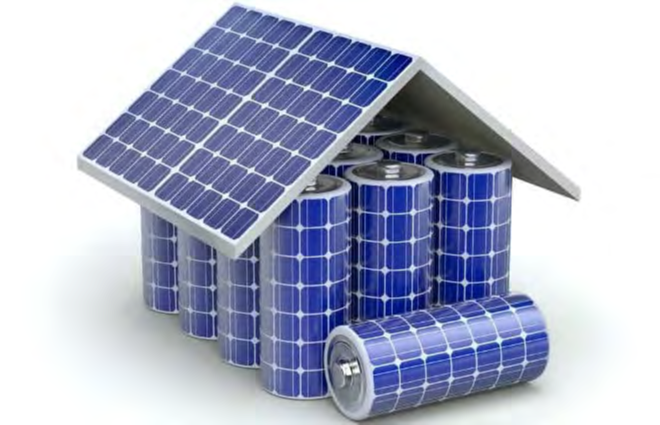
There are a multitude of different battery technologies available. This guide presents the most common technologies in battery storage which is the second source of energy for your Off-Grid system. There are many battery related terminologies out there and we appreciate that it can be difficult to decipher what they are and what everything means. Most of them you don’t need to know but here are the most useful ones for the understanding of your batteries capacity and status.
What does DoD or SoC stand for?
DoD, is short for the Depth of Discharge and is used to describe how deeply the battery is discharged.
Different types of batteries have different discharge rates and your system designer will be able to take you through these different systems and advise you on the type that will suit your needs.
SoC, is short for State of Charge and is used to describe how much charge is retained by the battery.
If the battery is fully charged, it means the SoC of the battery is 100%, if however, the battery has delivered 50% of its energy then the SoC of the battery is 50%.
What is the Usable Capacity of a battery?
The Usable Capacity of an Off-Grid battery bank will depend on the type of battery used. For example, Lead-acid batteries usually have a depth of discharge set at 30%, therefore, the usable amount of power will be 30% of the total storage. e.g. 10kwh battery with a 30% DoD = 3kwh of usable energy
Lithium-ion batteries have a much higher DoD which is usually. around 90–96% of the total storage e.g. 10kwh battery with a 90% DoD = 9kwh of usable energy
DAYS OF AUTONOMY
When buying an Off-Grid system it is essential that you know how much autonomy it can provide. The autonomy time is the daily usage times and means that with low or no sunlight during bad weather, you will have enough power to run all your appliances as normal, without the generator kicking in.
 The size of the battery bank must be able to power your home during consecutive days of rain or high cloud cover.
The size of the battery bank must be able to power your home during consecutive days of rain or high cloud cover.
Looking at the design of an Off-Grid system from a professional point of view, it is recommended to have at least 1.5 – 2 days autonomy in your battery bank. This is IF there is a backup generator present. Without a generator the “autonomy” time is recommended to be increased to 2-3 days.
To calculate the size of the battery bank you take your daily kWh usage and multiply it by the amount of days of autonomy you would like to have. For example, if you use 10kWh per day and would like 2 days autonomy, you would need to have a battery bank which has 20kWh of usable storage.
However, the Lithium batteries are extremely fast charging, giving the possibility of multiple daily charges even at low light conditions which will extend the autonomy. It’s a fact that in prolonged times of bad weather or storms, people normally use power more conservatively and by having a generator connected to the system, you’ll always have power available that can top up the battery bank if required.
LEAD ACID BATTERY TECHNOLOGY
AGM (Absorbed Glass Mat)
Lead, which is the heaviest non-radioactive metal, has been the standard in batteries for decades. This well- known battery technology has been used in Off-Grid living to date. In the battery’s internal construction, there is a fine fibre glass mat between each of the internal plates. This mat absorbs the acid in the battery, so there is no liquid acid leakage even if the battery is damaged. This provides several advantages such as a maintenance free design, and no gassing off. Expected lifetime at a daily 30% DoD is between 5–8 years.
Lead Carbon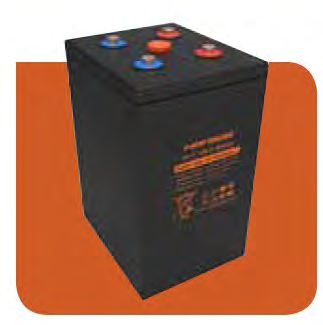
Combines technology super capacitor and lead acid battery
• Faster charging than lead acid batteries
• Fully sealed, no maintenance required
• 98% Recyclable
• Lifespan is 7000 cycles at 30% DoD = 20 years life expectancy
• Allows for greater depth of discharge (up to 80%)
• Superior resistance against partial states of charge – a chemical reaction Called “sulfation” which occurs during charging cycles and is the principal reason of failure in ordinary lead acid batteries

